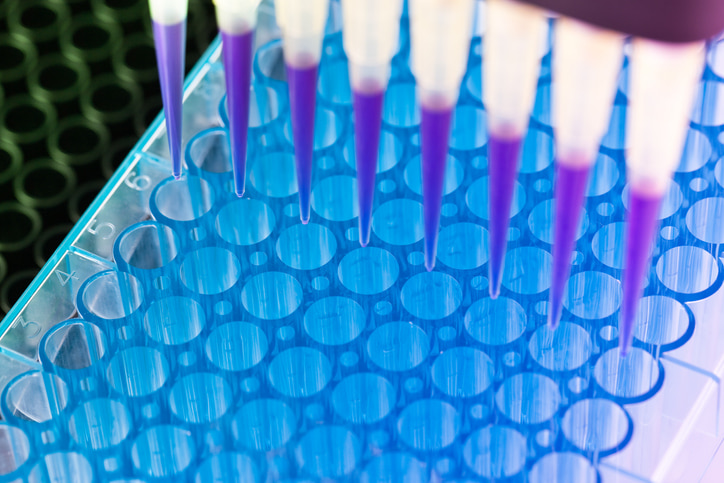Imagine a world where detecting cancer early doesn’t require invasive procedures or biopsies that cause discomfort and stress. Thanks to advancements in medical technology, liquid biopsy, a simple blood test, is making this possible. By analyzing fragments of tumor DNA circulating in the bloodstream, liquid biopsy offers a less invasive, faster, and highly accurate method to detect cancer at its earliest stages, improving the chances for successful treatment.
At Astera Cancer Care, we are committed to leveraging this innovative technology to enhance early detection and personalize treatment plans for patients throughout New Jersey and Pennsylvania. In this article, we’ll explore how liquid biopsy works, its benefits, and what patients can expect from this revolutionary diagnostic tool.
What Is Liquid Biopsy?
Liquid biopsy is a cutting-edge diagnostic test that detects cancer-related genetic material circulating in the bloodstream. Unlike traditional tissue biopsies, which require surgical procedures to extract tumor samples, liquid biopsy uses a simple blood draw to identify fragments of tumor DNA (known as circulating tumor DNA or ctDNA). This minimally invasive method offers a faster, safer, and often more comprehensive way to monitor cancer.
How Does Liquid Biopsy Work?
When cancer cells die, they release small pieces of their DNA into the bloodstream. Liquid biopsy tests analyze these fragments to detect:
- Genetic mutations linked to specific types of cancer
- Changes in tumor DNA over time
- Early signs of cancer recurrence or progression
This information helps doctors tailor treatments to the unique genetic profile of a patient’s cancer, enhancing the effectiveness of personalized therapy.
Advantages of Liquid Biopsy Over Traditional Biopsies
Liquid biopsy is rapidly gaining attention because of its many benefits:
- Minimally invasive: Requires only a blood sample, reducing discomfort and risk.
- Faster results: Lab processing times are generally quicker than tissue biopsies.
- Repeatable: Can be performed multiple times to monitor treatment response or detect relapse.
- Detects tumor heterogeneity: Samples DNA from multiple tumor sites, providing a broader genetic picture.
- Accessible for hard-to-biopsy tumors: Useful when traditional biopsy is unsafe or impossible.
Early Cancer Detection and Monitoring
One of the most promising uses of liquid biopsy is its potential for early cancer detection. Detecting cancer early significantly improves treatment success and survival rates. Liquid biopsy can:
- Identify cancers before symptoms develop
- Detect minimal residual disease (tiny amounts of cancer remaining after treatment)
- Monitor how cancer evolves during therapy
- Inform adjustments to treatment plans in real time
For patients in New Jersey and Pennsylvania, access to liquid biopsy technology means earlier interventions and more personalized care pathways.
Common Cancers Detected by Liquid Biopsy
While liquid biopsy is currently approved for use primarily in certain blood cancers and solid tumors, ongoing research continues to expand its applications. Common cancers where liquid biopsy plays a key role include:
- Lung cancer
- Colorectal cancer
- Breast cancer
- Prostate cancer
- Melanoma
- Ovarian cancer
Each cancer type has unique genetic markers that liquid biopsy can help identify, supporting tailored treatment strategies.
What to Expect During a Liquid Biopsy Test
The liquid biopsy process is straightforward:
- Blood Draw: A standard blood sample is collected at a clinic or infusion center.
- Laboratory Analysis: The sample is sent to a specialized lab where ctDNA is isolated and sequenced.
- Results & Interpretation: A multidisciplinary oncology team reviews the genetic findings to guide diagnosis or treatment.
Because the procedure is minimally invasive, it can be easily repeated to track disease progression without subjecting patients to repeated surgeries.
Limitations and Considerations
While promising, liquid biopsy is not a universal replacement for traditional biopsies. Some limitations include:
- Lower sensitivity in detecting very early-stage tumors in some cases
- Variability in results depending on tumor type and location
- May need to be combined with other diagnostic methods for a complete picture
Ongoing advancements in technology continue to improve the accuracy and utility of liquid biopsy in clinical practice.
Advanced Cancer Diagnostics Close to Home
Patients across New Jersey and Pennsylvania seeking innovative diagnostic tools now have access to liquid biopsy through leading oncology centers. This technology complements existing diagnostic methods and supports highly personalized cancer care plans.
Experience Personalized Cancer Care with Astera Cancer Care
At Astera Cancer Care, we are proud to offer access to liquid biopsy testing as part of our comprehensive oncology services. Serving communities across New Jersey and Pennsylvania, our expert team integrates advanced diagnostics with personalized treatment plans to provide the best possible outcomes.
If you or a loved one are interested in learning how liquid biopsy could play a role in your care journey, contact us today to schedule a consultation.

